Highland stags, the Royal family and the sport of deer stalking have been long intertwined. An examination of the years 1840 (when Albert and Victoria married) to 2020 (when Prince Harry sold his rifles, due to his wife’s disapproval of ‘blood sports’) shows how the rifle of the hill has developed.
The essence of a best stalking rifle has always been the same and to understand how rifles changed over the years, we have to consider the component parts.
In the mid 19th century, both double and single barrelled percussion rifles were popular. Double rifle actions gradually changed from fixed; requiring loading from the muzzle, to hinged; allowing the gun to be loaded from the breech.
Single-barrelled rifles developed several types of breech loading system, including falling-block (like the Farquharson) and tipping-block (like the Martini). External hammers gradually gave way to internal firing systems and, eventually, bolt-actions took over.
From percussion-cap ignition in Prince Albert’s heyday, pin-fire made an interim appearance and by Edward VII’s adulthood, centre-fire cartridges were the norm.
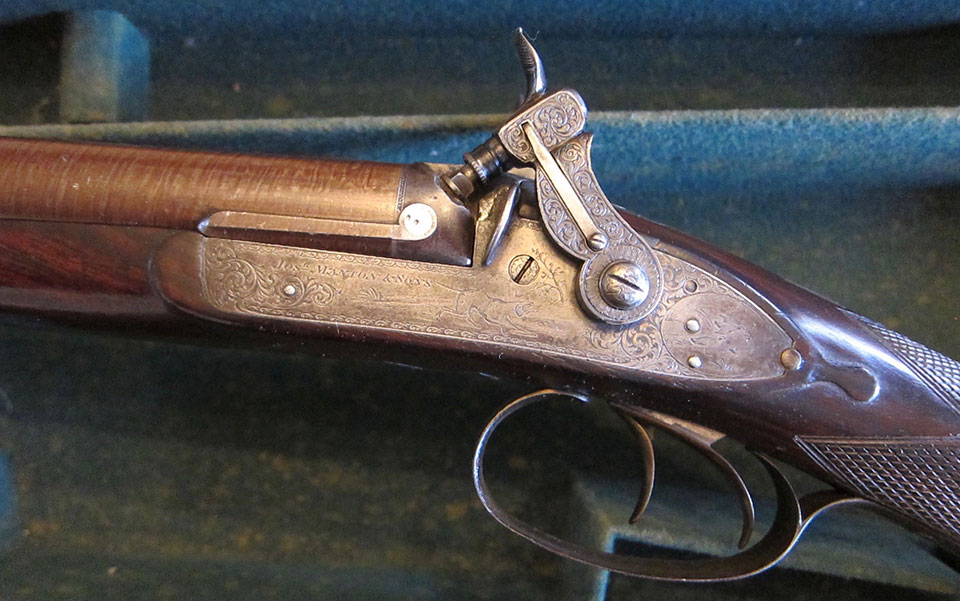
Ammunition also guided rifle development. Pin-fire enabled all necessary components to be loaded into a cartridge and inserted into the breech, rather than rammed down the muzzles. Breech-loading also achieved a tighter fit of bullet to bore. This, in turn, led to improvements in rifling and accuracy.
The perfection of solid-drawn brass cases increased performance and the introduction of smokeless powders (like Cordite) allowed for a significant reduction in calibre, while retaining the energy-delivery necessary to kill deer cleanly.
As rifling improved, so did accuracy and effective range. Simple leaf sights were surpassed by ladder sights, peep sights and telescopic sights. Each development increased the effectiveness of the stalker at longer ranges.
A rifle/cartridge combination capable of consistently delivering a bullet to a four-inch square, 600 yards distant, is only effective if the operator can focus clearly on that target.
The Qualities of a Stalking Rifle
These developments aside, the essence of a good stalking rifle has remained remarkably constant.
It has to be carried, therefore it must not be cumbersome, yet must not be so light as to be impossible to hold steady and incapable of taming recoil. The rifle must throw a bullet of sufficient weight, and deliver it with sufficient force, to despatch a 150-kilo stag cleanly with a shot to the vitals.
Many stalking scenarios require a shot be taken across open ground at ranges of up to 250 yards. A rifle that can deliver a bullet with as flat a trajectory as possible is desirable. This allows for minimal hold-over or hold-under, between 50 yards and 250 yards.
The sport of stalking, however, is exactly that; the act of getting close to your quarry in order to shoot it, not the art of trying to hit it from as far away as possible.
Fierce recoil will make the stalker fear his rifle and affect his accuracy and consistency. However, a stalk should end with a one-shot kill, so the need to fire repeated shots for long periods is not important.
Simplicity of operation and reliability are important. The key moment is when the stalker chambers a round, aims and fires. Anything making this process at all awkward can ruin the entire day: opportunity lost.
A good stalking rifle should be easy to cycle, aim and fire from a standing, kneeling or prone position. It must also be strong enough to withstand the occasional knock or bang and cope with inclement weather.
The Changing Hill Rifle.
The 1840s and ‘50s.
Rifles of this period were already impressively accurate. John Dickson made them with two-groove rifling, firing pear-shaped bullets with ‘wings’ which fitted into the grooves. They were effective at ranges up to 200 yards. Remarkably, telescopic sights were being fitted to these rifles as early as the 1850s.
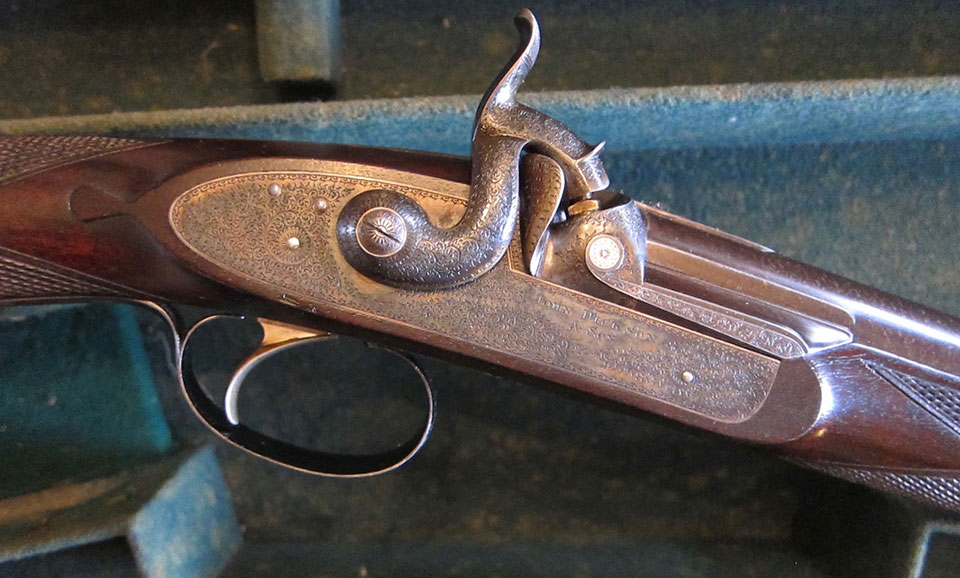
The pinnacle of percussion stalking rifle development was a double rifle of 30-bore, with leaf sights to 100, 200 and 300 yards. The external hammer had a safety bolt to prevent the gun firing inadvertently. The stock had a cheek-piece and patch box. These were built to the very best quality by makers like Purdey and Dickson int the late 1850s.
It wasn’t until then that we really see the impact of breech-loading rifles in the order books of our best gunmakers. From the late-1850s until the mid-1860s, pin-fire rifles had a brief heyday before giving way to centre-fire ‘black powder express’ rifles.
The last quarter of the 19th Century.
Pin-fire and centre-fire doubles of the period have many similarities; with their external hammers, Jones under-lever screw-grip actions, often with back-action locks, and leaf sights. For deer stalking, a .450 or .500 black powder express, weighing 8 1/2lbs - 9 1/2lbs was popular.
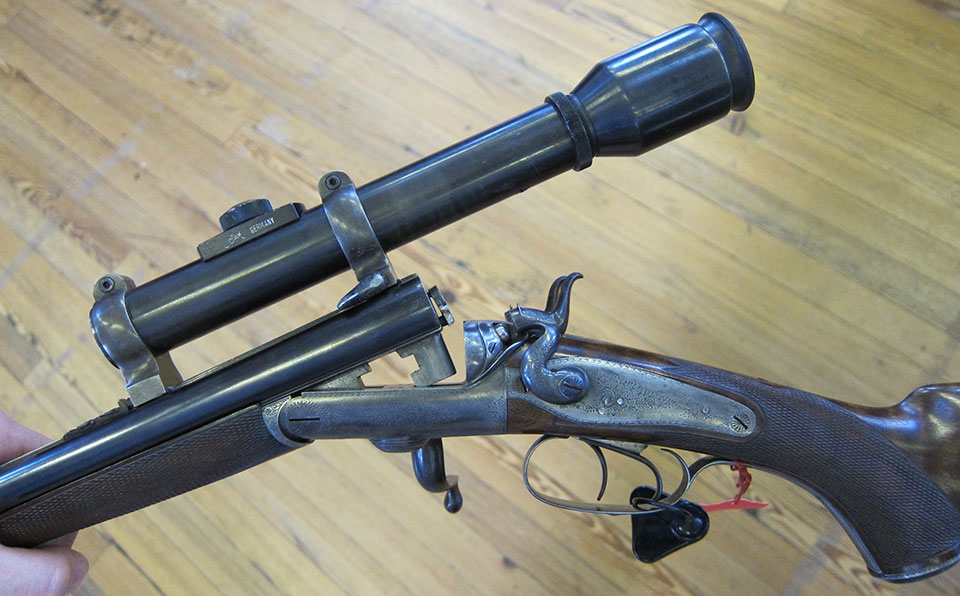
Double-barrelled centre-fire hammer stalking rifles continued into the 1890s but the arrival of some very good single barrel breech-loading rifles challenged them for supremacy on the hill. Alexander Henry’s falling block of 1865 was one.
A typical Henry stalking rifle in .450 or .500 BPE had a 28” barrel and weighed about seven and a half pounds. These were very popular and a hammerless version soon followed. The Farquharson hammerless single barrel falling block rifle also became popular.
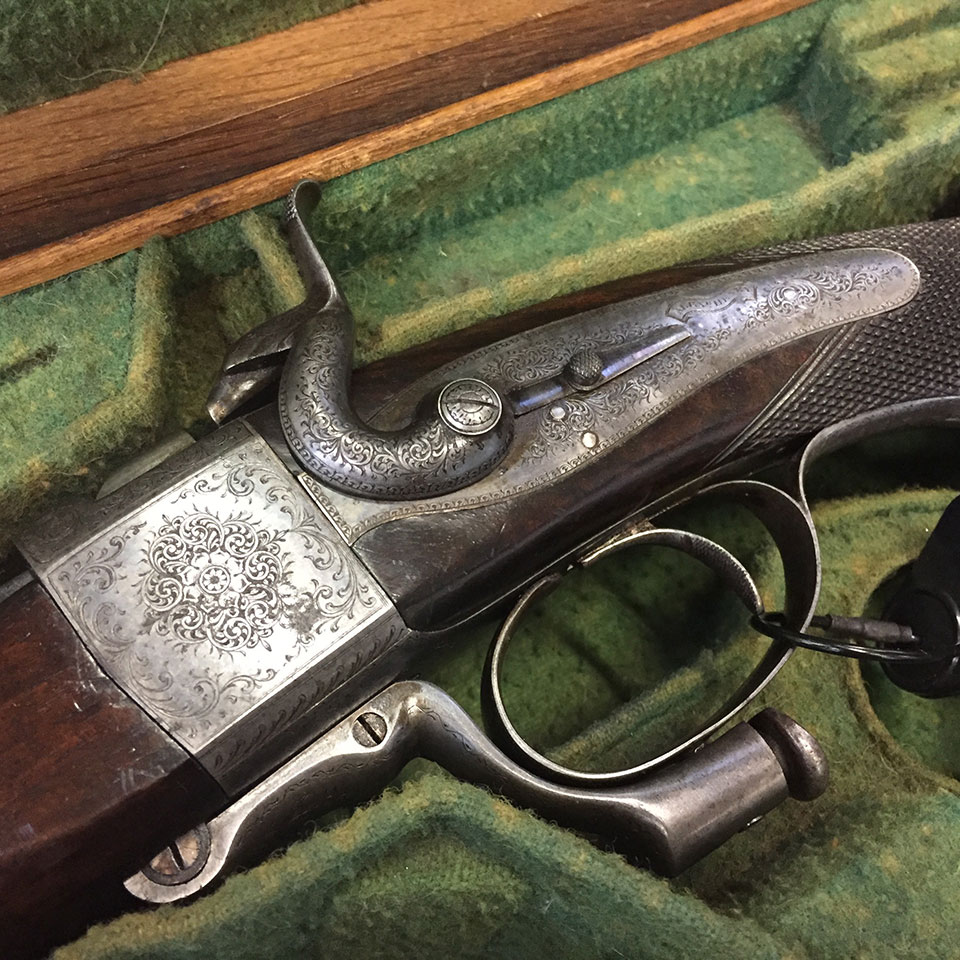
The first Quarter of the 20th Century
The 1900s saw the arrival of the Mauser 1898, followed closely by the Mannlicher 1903. British makers began selling these as they were affordable, multi-shot, robust and reliable. When nitro powders and better rifling were added to the package, they took over almost completely.
‘Smokeless’ powders, with their greater power, created a class of stalking rifles of smaller calibre than had been the norm. Black powder .450s gave way to the Cordite .303 and several continental cartridges.
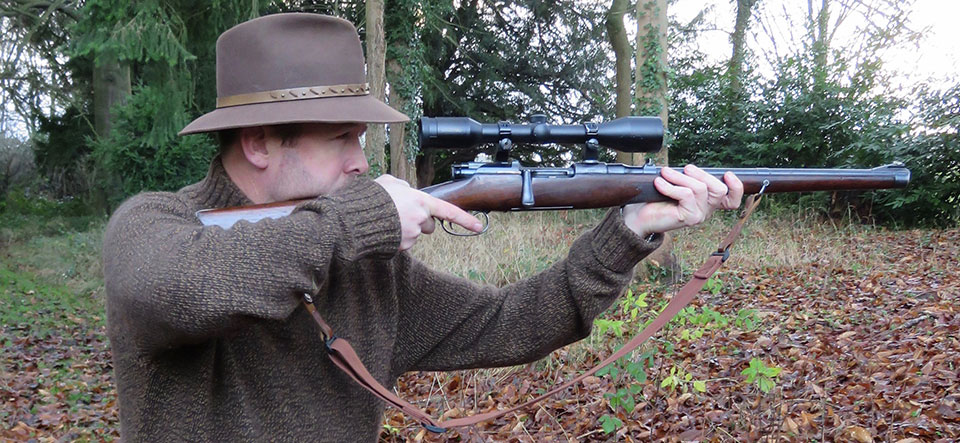
The 1906 Mannlicher-Schonauer with its rotary magazine, in 6.5mm became a classic, with several British gun makers offering them. Prices ranged from nine to twelve pounds, depending on quality. Comparable in price was the Farquharson falling-block rifle, also chambered for the .256 Mannlicher.
Rigby and W.J. Jeffery sold Mauser rifles in .275 (7x57), which ranged from seven to eleven pounds. The .303 Lee Enfield was available in sporting guise (Lee Speed) before the first World War, with cordite-packed ammunition but the 7x57 had a flatter trajectory.
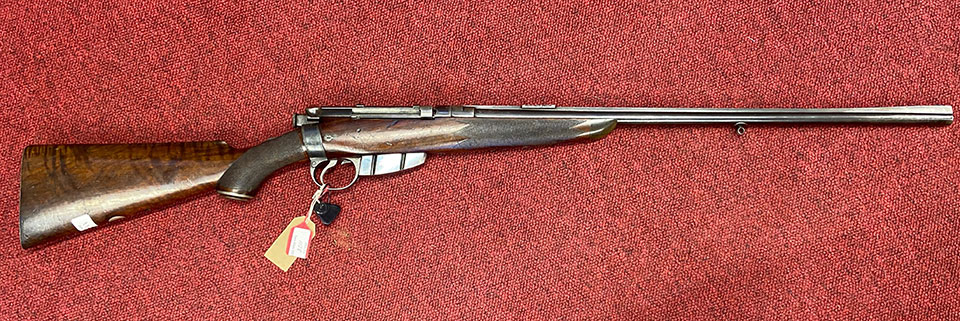
While bolt-action rifles were gaining popularity, gunmakers still rated the Farquharson; Jeffery writing ‘We can with confidence recommend these rifles as being the best model obtainable to those sportsmen who require a really first class weapon’. However, the advantages of the bolt-action were apparent to the public.
Post-War
After WW2, the bolt-action became unquestionably dominant and American actions, like the Remington 700, began to take some market share.
Style became influenced by American builders, like Weatherby. The Parker-Hale ‘De Luxe’, based on a Mauser action, but with a very ‘modern’ look was typical of stalking rifles of the era; with Monte-Carlo stock, palm swell, white spacers, ventilated rubber recoil pad and 24” barrel, it was available in .308, 7x57, .30/06 and 6mm Rem as a hill rifle.
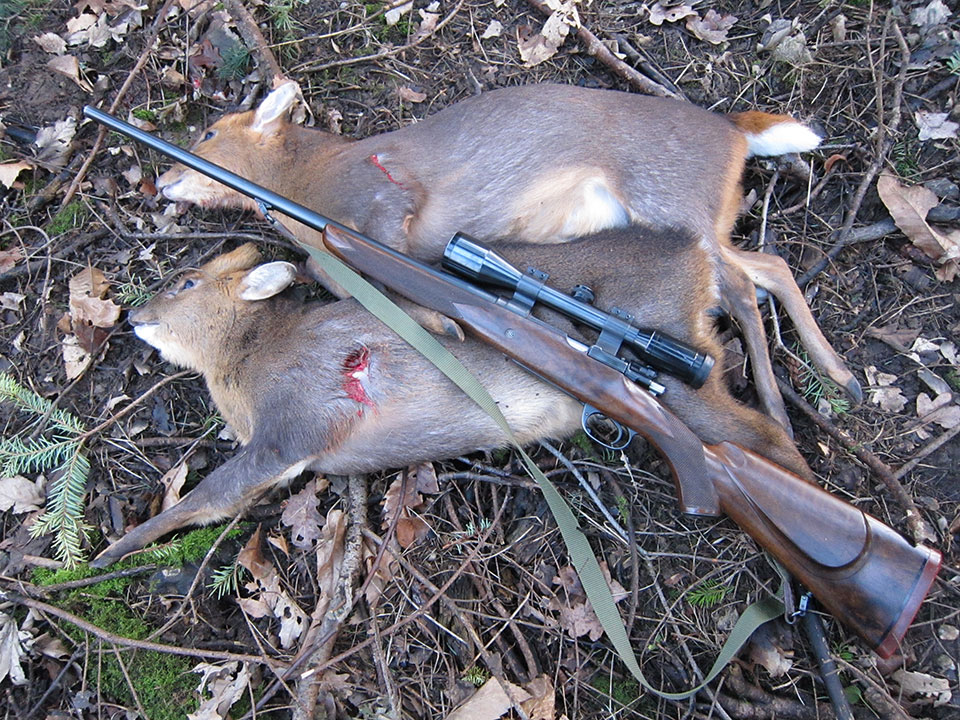
Today
A number of makers will build you a stalking rifle. Ian Sweetman, formerly of Westley Richards and Purdey, who now specialises in custom rifle building, says the average order weighs 8lbs, has a 22” barrel, is based on a new Mauser action (though hybrid modern actions are becoming more common) and is chambered for 30-06, .308 or 6.5 Creedmore.
Expectations are very high today, with people demanding target rifle accuracy from a hunting rifle. Glass bedding or titanium chassis construction help achieve this.
Barrels can be made from stainless steel and ceracoted, rather than blacked; providing better weather resistance. A new custom stalking rifle costs £28,000. Rigby offers the traditional, Mauser-action, ‘Highland Stalker’; very much a modern version of their 1930s standard, from around £7,000.
Modern rifle technology has increased capability and durability to the degree that accurate, long-range sniping of deer from the hillside is possible at 600 yards in skilled hands However, the sport of stalking, with its traditions and demands, still dictates a rifle very similar to those our grandfathers used.
Published by Vintage Guns Ltd on




